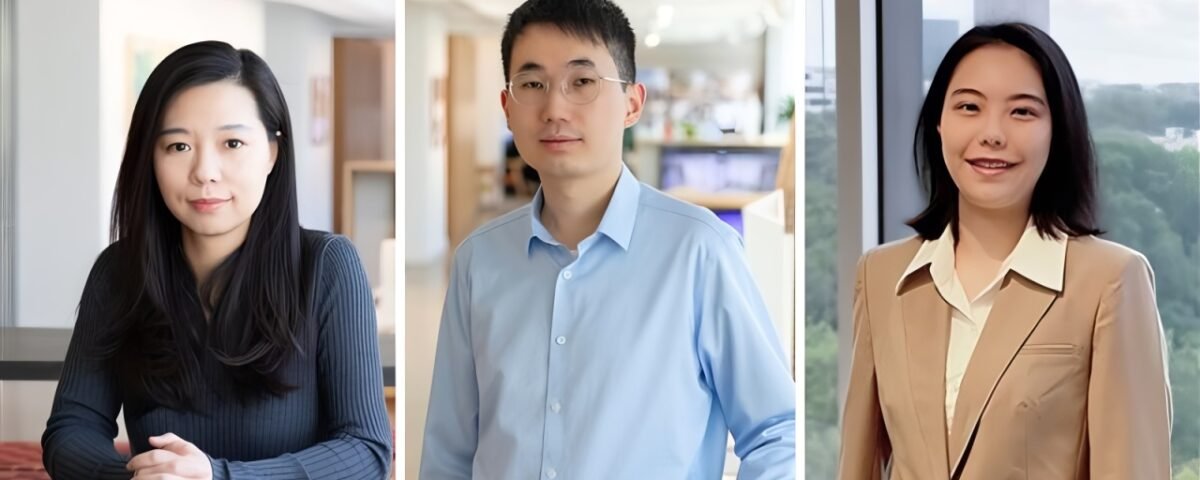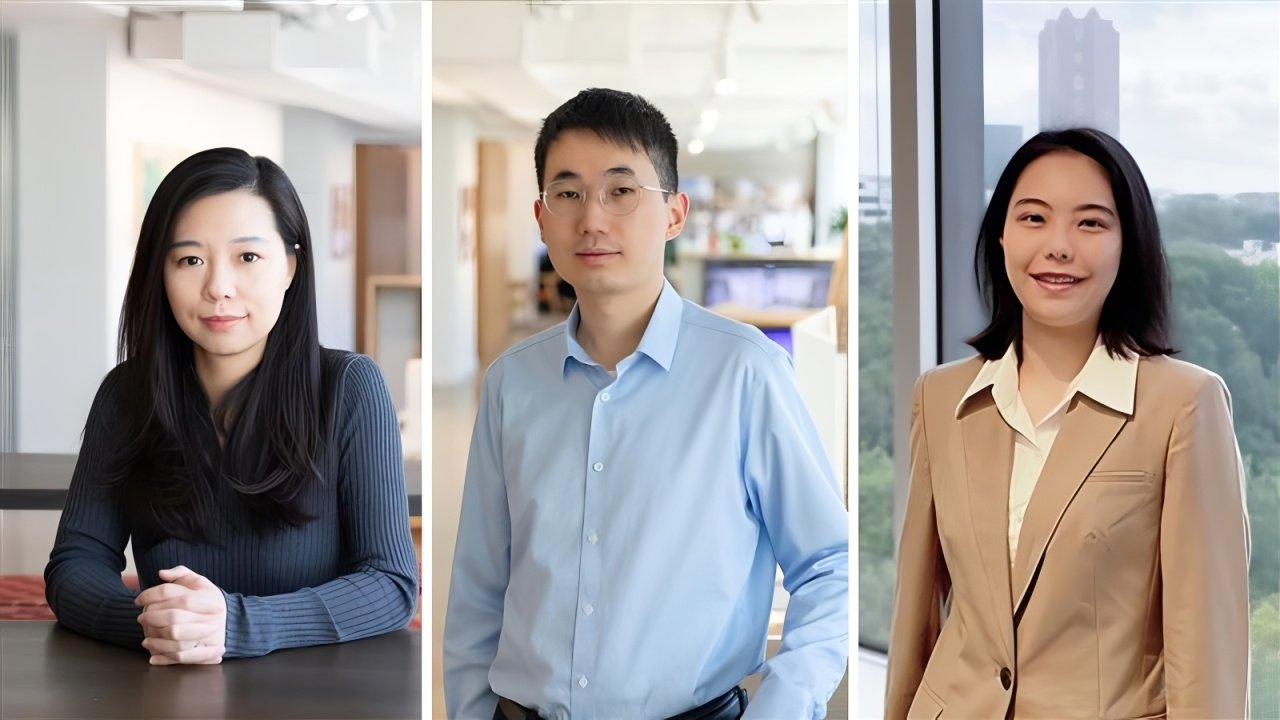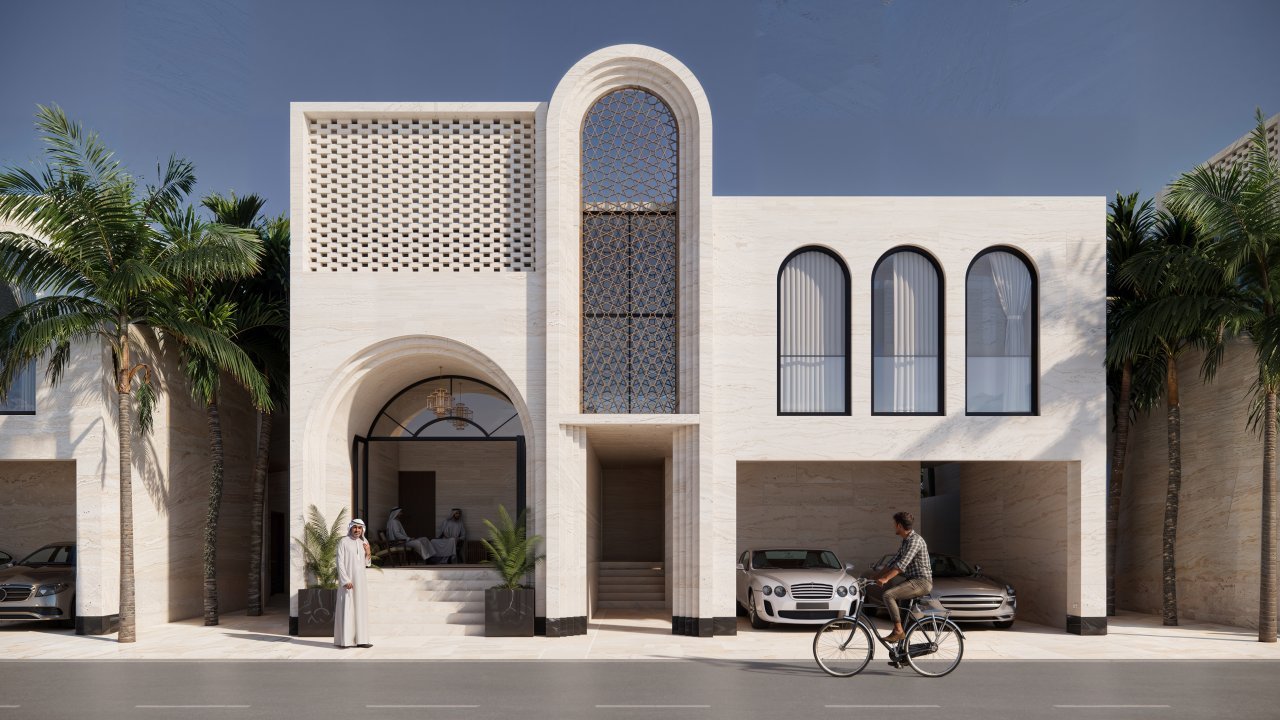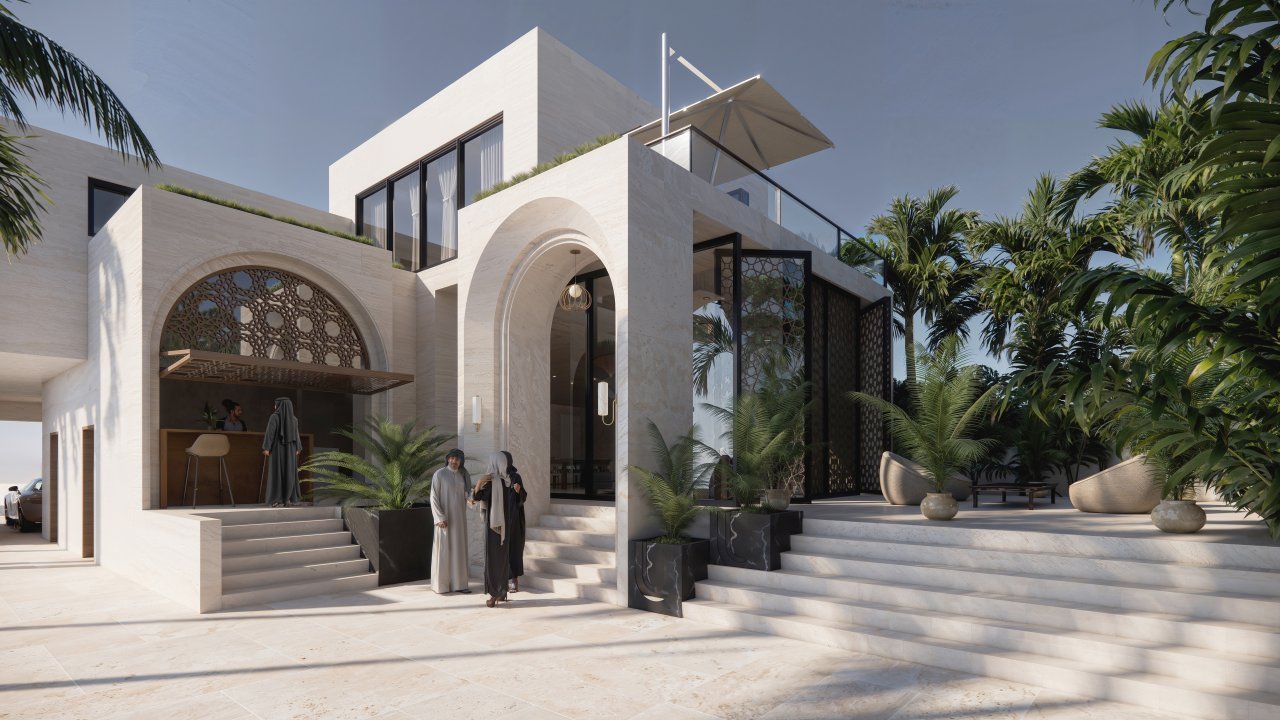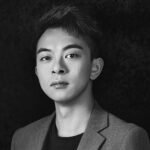
The Hidden Language of Packaging Design with Sinong Wu
July 22, 2025
Behind the Scenes with Ying-Ning Chen: Countess from Paris
July 22, 2025Mengyao Ye, Shen Tao, and Pingnuo Wang
Working between major design firms and independent collaborations, Mengyao Ye, Shen Tao, and Pingnuo Wang combine professional experience with personal exploration. Their architectural approach centres on emotion, rhythm, and design as a lived experience. Together, their designs strive to balance structure with feeling, and ambition with restraint.
Mengyao Ye: Thank you! I’m Mengyao Ye — a New York–licensed architect with a Master of Architecture from the University of Pennsylvania. I currently practice at Kohn Pedersen Fox (KPF), focusing on projects that explore the intersection of form, environment, and human experience.
My passion for architecture stems from a deep interest in how design connects with nature and emotion. Villas, in particular, offer a unique opportunity to explore spatial serenity, material richness, and contextual sensitivity. I’m inspired by the potential of residential retreats to foster slow, intentional living, where architecture becomes an extension of the landscape and a reflection of personal rhythm.
Shen Tao: My name is Shen Tao, and I’m an architectural designer currently based in New York, working at Kohn Pedersen Fox. In addition to my professional work, I regularly engage with design competitions alongside close collaborators.
These projects are where we test alternative approaches and engage with design questions from fresh angles. I was drawn to architecture early on by its unique combination of storytelling and structure.
Growing up in a small town, I experienced how architecture could quietly shape the rhythm of life, offering both order and surprise. That lasting impression led me to pursue a discipline where creativity meets responsibility, and where ideas can be made tangible.
Pingnuo Wang: Thank you so much—I'm truly honoured to receive the London Design Awards. My name is Pingnuo Wang, and I’m an architectural designer based in Dallas. I earned my Bachelor of Architecture in China and later completed a Master of Science degree at the University of Pennsylvania.
What inspired me to pursue architecture is the belief that buildings are more than just shelters—they serve the people who use them and enhance the urban experience. I’m passionate about using design to create harmonious communities and to reflect the spirit of our time.
Through architecture, I hope to pass on cultural values and bring a sense of joy and meaning not only to those who inhabit the spaces but also to those who encounter them in passing.
Mengyao Ye: This recognition from the London Design Awards is a true honour and a moment of reflection in my professional development. It validates the care and intention I bring to designing living spaces that go beyond function — spaces that are immersive, grounded in context, and deeply personal. Winning in the Villa category encourages me to continue exploring residential architecture that connects people with place, nature, and a slower rhythm of life.
Shen Tao: It’s deeply meaningful to receive international recognition for a project that grew out of focused collaboration and shared inquiry. It reinforces our belief that architecture, even at a conceptual level, can initiate conversations beyond its origin. This award highlights the potential of speculative design to contribute to broader discussions around housing, materiality, and cultural memory.
Pingnuo Wang: This achievement is more than just a personal milestone; it represents a validation of the principles I aim to embody in my architecture—careful consideration, respect for cultural heritage, and positive community influence.
As an international designer, this award inspires me to continue exploring how design can connect diverse cultures while addressing both local environments and global issues. It reinforces my belief that effective design communicates universally through space, feeling, and experience.
Mengyao Ye: This recognition has been a moment of encouragement and validation, both for me and for the people I’ve worked with along the way. While the full impact is still unfolding, the award has already sparked new interest in the project and brought attention to the ideas behind it.
It has given me a stronger platform to talk about residential architecture in dialogue with nature, and I hope it will lead to more opportunities to explore design that celebrates slowness, craft, and emotional connection to place.
Shen Tao: The award has brought welcome visibility to our project group and opened doors to new dialogues—both inside and outside the profession. It’s sparked interest from peers in different parts of the world and introduced us to others tackling similar questions. Within the office, it’s encouraged to continue curiosity and to affirm the value of cross-pollination between competition and project work.
Pingnuo Wang: This achievement has been a powerful source of motivation for both myself and my team. It reflects the shared dedication and core design values we uphold, creating new chances to engage with professionals and potential collaborators in the industry. Most importantly, it reinforces our belief that careful, user-centred design can make a meaningful difference everywhere, no matter the context.
Mengyao Ye: For me, experimentation is where ideas start to take form. Villas offer a unique opportunity to explore space as a sensory and emotional experience, and I often begin by testing various massing strategies and circulation paths through both digital models and physical studies.
In one villa design, I used 3D printing to visualise how the architecture would open up to the surrounding landscape. Iterating through different sectional cuts and entry sequences helped us choreograph the way a person might move through the space, when to compress, and when to reveal. These experiments weren’t just about aesthetics, but about designing moments of pause, transition, and connection.
Shen Tao: Experimentation is how we push ideas past the expected. In this project, we explored the use of layered screening systems not only as visual elements but as climatic and spatial tools. Rather than applying form for its own sake, we studied how shadow, airflow, and gradual transitions could structure the entire domestic experience. That process involved both digital modelling and physical sketching to test how softness and structure could coexist.
Pingnuo Wang: One of the most unique inspirations I found came from studying traditional passive cooling methods while designing a modern water circulation system for this project. Rather than depending only on technical guidelines or conventional mechanical approaches, I explored how vernacular architecture across various cultures harnesses natural elements—such as wind towers and water—to enhance comfort.
This blend of ancient techniques with contemporary design sparked fresh ideas that shaped both the system’s functionality and the overall spatial experience. It reminded me that innovation often arises when technology and tradition come together in unexpected ways.
Mengyao Ye: For villa design, my most unusual but rewarding source of inspiration has been visiting open houses, especially private properties that are being sold. Walking through lived-in spaces gives me an unfiltered understanding of how architecture supports everyday rituals: how people transition from indoor to outdoor, where they gather, and how they personalise their environments over time.
These visits are often more insightful than studying pristine architectural photography. They help me design villas that feel lived-in from the start — responsive to human habits, layered with experience, and quietly luxurious in their simplicity.
Shen Tao: For this project, a surprising reference came from textile patterns—specifically, how weaving techniques organise tension and looseness. That logic helped us imagine a spatial system where compression and release are choreographed across the plan. It wasn’t a literal translation, but a conceptual analogy that helped us rethink thresholds and sequences.
Pingnuo Wang: One unexpected source of inspiration came from watching how people navigate and engage within tight, everyday environments. This observation encouraged me to explore the flow and connections between spaces in a small residential project, with the goal of encouraging spontaneous interactions and building a greater sense of community.
Mengyao Ye: What many people don’t see is how sensitive and interconnected the design process truly is. In villa design, where the architecture often aims for calmness and simplicity, any minor design adjustment — even the repositioning of a stair or window — can affect everything from structure and lighting to HVAC systems and envelope detailing.
There’s a quiet discipline behind the scenes: understanding how systems interact so that the design feels effortless in the end. The more we recognise this web of relationships, the better we can translate ideas into built reality, with beauty and integrity intact.
Shen Tao: That good design isn’t a straight line. There are moments of clarity and moments of uncertainty—and both are necessary. We often loop back, reframe the brief, or revise something that seemed resolved. Design is not about perfection from the start; it’s about being attuned enough to keep adjusting, so the final result feels inevitable.
Pingnuo Wang: Design is rarely a solo effort; it thrives on collaboration and constant refinement. Working closely with clients, consultants, and users means the design evolves through ongoing feedback and multiple adjustments.
This process ensures the end result not only fulfils practical requirements but also truly responds to the needs of those who will use the space. Instead of a sudden inspiration, design is more about teamwork and gradual improvement.
Mengyao Ye: For me, navigating the balance between design intent and client expectations is less about compromise and more about dialogue. Especially in villa design, where homes are highly personal, it’s essential to listen closely to uncover not just what the client wants, but why.
I see design as a tool to interpret and elevate those desires, sometimes even revealing needs the client didn’t articulate at first. The phrase “the customer is god” reminds us that design isn’t about ego — it’s about empathy. When the relationship is built on trust and curiosity, the result is a home that’s not only beautiful but truly meaningful — a reflection of both the designer’s craft and the client’s life.
Shen Tao: I see it as a process of interpretation. Rather than compromising between two sides, we aim to find underlying values that can shape the design together. In this project, we imagined a client brief centred around climate responsiveness and cultural rootedness. That framing guided our choices—from the massing strategy to how we handled edge conditions—so the concept remained legible while allowing flexibility.
Pingnuo Wang: Balancing client expectations with my own design ideas starts with truly understanding their goals and priorities, allowing me to tailor my concepts accordingly. I make it a point to communicate clearly the practical benefits of my design choices, emphasising how they improve user experience and functionality.
When differences arise, I view them as opportunities for collaborative problem-solving, aiming to find solutions that honour both the client’s vision and the design’s integrity. This approach not only builds trust but also often leads to more creative and effective outcomes.
Mengyao Ye: Designing this villa for Emirati citizens in the United Arab Emirates presented a unique and meaningful challenge: how to create a personal retreat that speaks to a culture, climate, and lifestyle very different from my own. Rather than rely on superficial gestures, I wanted to understand how space is used, how privacy is respected, and how architecture responds to intense climate conditions in that context.
I took time to study traditional residential typologies, explored local urban patterns through satellite imagery, and reached out to friends and peers with direct experience in the region. Their stories and insights helped me translate cultural values into architectural language — integrating shading strategies, courtyards, and layered thresholds to create a design that feels rooted, respectful, and resonant with its place.
Shen Tao: One challenge was developing a coherent identity using a minimal material palette. We wanted the architecture to feel elemental, but not generic. To resolve this, we paid attention to proportion, depth, and how materials age. Every surface had to do multiple things—frame views, modulate light, hold structure. We treated those constraints as a framework for clarity rather than limitation.
Pingnuo Wang: A major challenge in the project was developing a water circulation system that could efficiently cope with high temperatures while maximising storage capacity on a constrained site.
To address this, I conducted a detailed study of the site’s topography and climate, then performed calculations to determine the ideal volume and positioning of water reservoirs. This method enabled me to devise a functional design that harmonises environmental requirements with the physical limitations of the site.
Mengyao Ye: For me, overcoming creative blocks starts with shifting focus from the big picture to the small but essential questions. When designing a villa, I might pause and ask: What materials belong to this place? How does the sun move through the site? What mood does the client want to feel when they enter? These questions may seem technical, but they often reveal unexpected creative directions.
I’ve found that what feels like a “block” is often just a signal to look deeper — to let the site, the context, and the people guide the process. In that sense, creativity doesn’t come from fighting constraints, but from trusting them to show you the way forward.
Shen Tao: I tend to shift to making rather than thinking—whether that’s a loose sketch, a quick model, or writing out questions. That hands-on process often helps ideas re-emerge in unexpected ways. I also look outside architecture entirely—films, conversations, or even walking through unfamiliar neighbourhoods can restore a sense of curiosity.
Pingnuo Wang: When I feel stuck creatively, I’ve learned that stepping away is often the best way forward. Whether it’s taking a quiet walk, watching how people move through a space, or simply allowing myself to do nothing for a while, those unstructured moments often help reset my mind.
Instead of forcing ideas, I shift my focus to light sketching or building loose models, not aiming for results but for rediscovery. Letting go of pressure creates room for fresh thoughts to surface and helps me reconnect with the essence of the project.
Mengyao Ye: As a homeowner who has personally managed several renovation projects — including siding, flooring, and bathroom work — I’ve come to understand architecture not only as a creative pursuit, but as a lived experience. Those experiences ground my design approach in practicality and empathy.
When designing villas, I draw from that understanding to think about how a space will age, how materials perform, and how each moment—from stepping onto a floor barefoot to opening a window—contributes to a sense of place and comfort. My goal is to create designs that are not only elegant but also deeply considered and intuitively livable.
Shen Tao: Attention, empathy, and quietness are values I carry into design. Coming from a place where space was limited, I’ve learned to be sensitive to how architecture can support both privacy and openness. I’m also influenced by moments of stillness—how architecture can create calm without being inert. My aim is always to design spaces that feel both grounded and generous.
Pingnuo Wang: My design philosophy is shaped by a deep respect for people, place, and cultural dialogue. Having lived and studied across both Eastern and Western environments, I’m constantly inspired by the interplay between heritage and innovation. I aim to create architecture that bridges this duality, where traditional values and modern sensibilities coexist naturally.
Inclusivity and user experience are also central to my approach. I believe that well-designed spaces should respond to everyday needs while also carrying emotional and cultural depth. For me, good design is not just about how a building looks, but how it feels and functions for those who use and encounter it.
Mengyao Ye: For designers just starting out, I’d say: step down from the pedestal of imagination and into the rhythm of real life. It’s easy to get caught up in the idea of designing perfect forms, but lasting architecture begins with understanding how people actually live — how they rest, gather, move, and reflect.
Especially in designing villas, which are often intimate, quiet spaces, success comes not from projecting an ideal, but from listening deeply to context and human experience. Stay curious, stay grounded, and let real life shape your creativity, not the other way around.
Shen Tao: Stay curious, and protect the space where your ideas can grow. Success isn’t always loud—it often comes from sustained attention to what matters to you. Try things, revise them, and trust that your voice will take shape over time. And work with people who challenge and support you—that kind of dialogue sharpens everything.
Pingnuo Wang: To those starting out in design, I’d say: don’t worry about being perfect—focus on being persistent and observant. Curiosity will take you far, especially when paired with the courage to ask questions, experiment boldly, and learn from setbacks.
Design isn’t a straight path—it’s a process of refining, reworking, and slowly building your own perspective. What really sets your work apart is the passion behind it, so always stay close to what genuinely inspires you.
Mengyao Ye: Rather than choosing a historical figure or well-known designer, I’d honestly choose to continue working with my teammates on this project — Shen Tao and Pingnuo Wang.
Collaborating on design, especially something as personal as a villa, takes a special kind of synergy. It’s rarely smooth, but when you’re working with people who care deeply and think critically, the creative tension becomes a source of strength.
Our process was full of intense discussions, unexpected turns, and collective breakthroughs. It reminded me that the best design doesn’t come from one voice, but from a chorus of ideas that push, refine, and inspire each other. I’m grateful for that partnership and would be excited to continue it.
Shen Tao: I’d be excited to collaborate with architects or artists who work closely with landscape and light. Someone like Junya Ishigami, whose work rethinks what structure and atmosphere can be. I admire how such designers bring a sense of slowness and elemental beauty to their work. It would be a privilege to learn from that kind of attunement.
Pingnuo Wang: I’d love to collaborate with designers or studios that combine a deep respect for cultural context with a strong sense of social responsibility. What inspires me most are teams that approach design through thoughtful research, care about how people experience space, and aren’t afraid to experiment.
I believe meaningful design happens when creativity is grounded in place, community, and purpose—working with like-minded collaborators would be both inspiring and transformative.
Mengyao Ye: A question I wish people would ask is: What do you feel you couldn’t quite accomplish in this project?
With this villa design, I wish we had been able to push further in connecting architecture with the natural landscape, not just visually, but experientially. There were constraints, of course, but I think there was still more room to dissolve boundaries between inside and out, to let the seasons and surroundings more fully shape the way people live in the space. That lingering aspiration is what motivates me moving forward — to design with even more openness, clarity, and sensitivity to place.
Shen Tao: I wish people would ask how a project changes over time—how it evolves from the first sketch to the last iteration. That journey often reveals the real thinking behind a design. It’s in those pivots and refinements that the project becomes truly its own. I believe the way we change our minds—responsively, thoughtfully—is just as important as the first idea itself.
Pingnuo Wang: I wish more people would ask me: 'What do you enjoy most about the design process?' Although the finished design usually receives the most attention, I find the design process itself to be the most fulfilling part, particularly the initial concept stage.
It’s a time when ideas are still fresh and full of possibilities, allowing me to experiment freely, ask questions, and explore different directions. This phase is also where teamwork and unexpected discoveries play a crucial role in shaping the project’s path. Rather than feeling uncertain, I find this creative ambiguity energising and inspiring.
Winning Entry
Archlight – A Courtyard Home in the Emirates | 2025 London Design Awards
Archlight reimagines the Emirati home as a sanctuary of light, privacy, and adaptability. Rooted in the vernacular principles of the courtyard house, the project balances tradition with innovation by blending travertine-clad walls, arched thresholds, and passive design strategies... (read more here)
Mengyao Ye, Shen Tao, and Pingnuo Wang
Working between major design firms and independent collaborations, Mengyao Ye, Shen Tao, and Pingnuo Wang combine professional experience with personal exploration. Their architectural approach centres on emotion, rhythm, and design as a lived experience. Together, their designs strive to balance structure with feeling, and ambition with restraint.
Explore more design stories on Building Tomorrow’s Taoyuan - Explains Mayor Chang San-cheng here.

